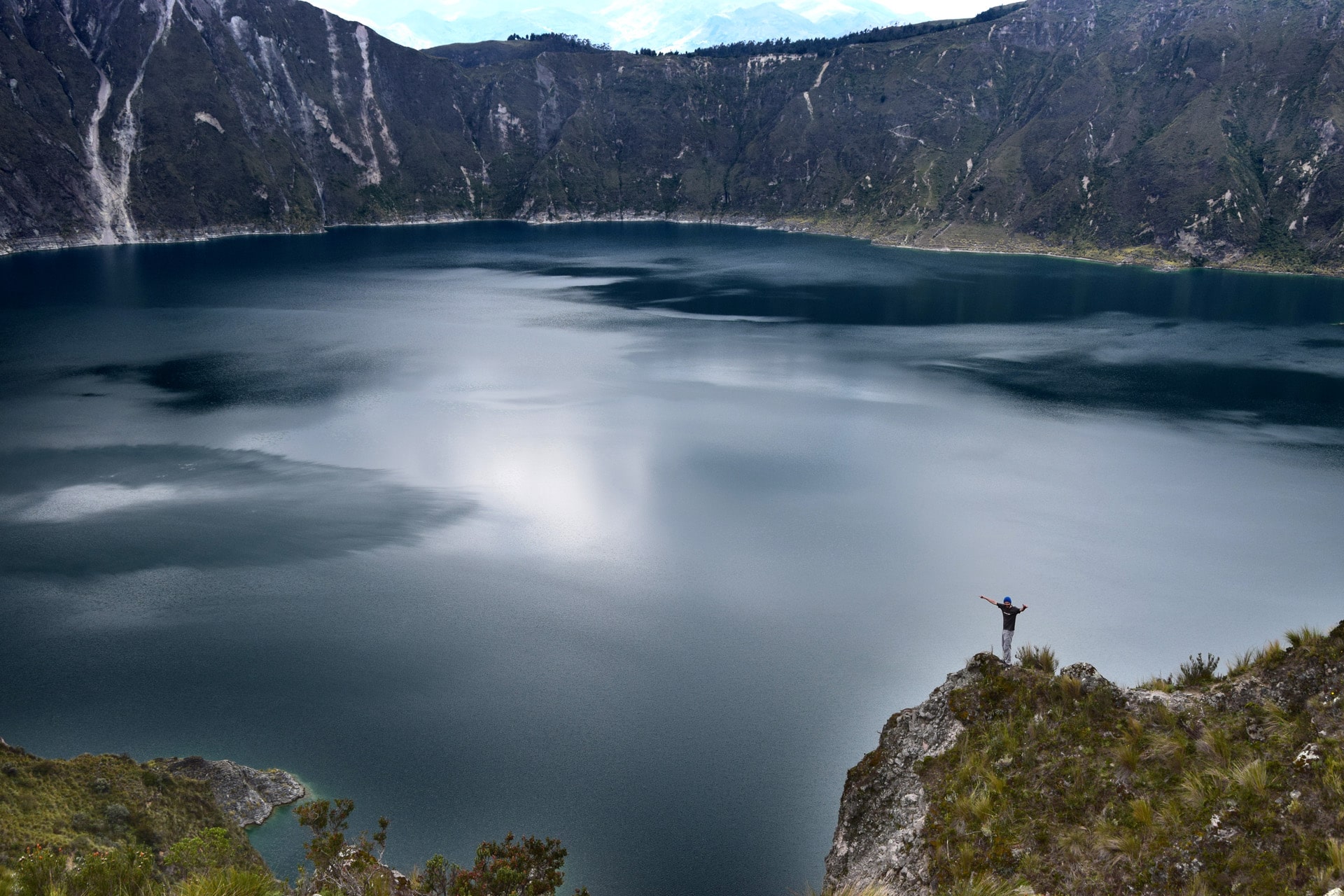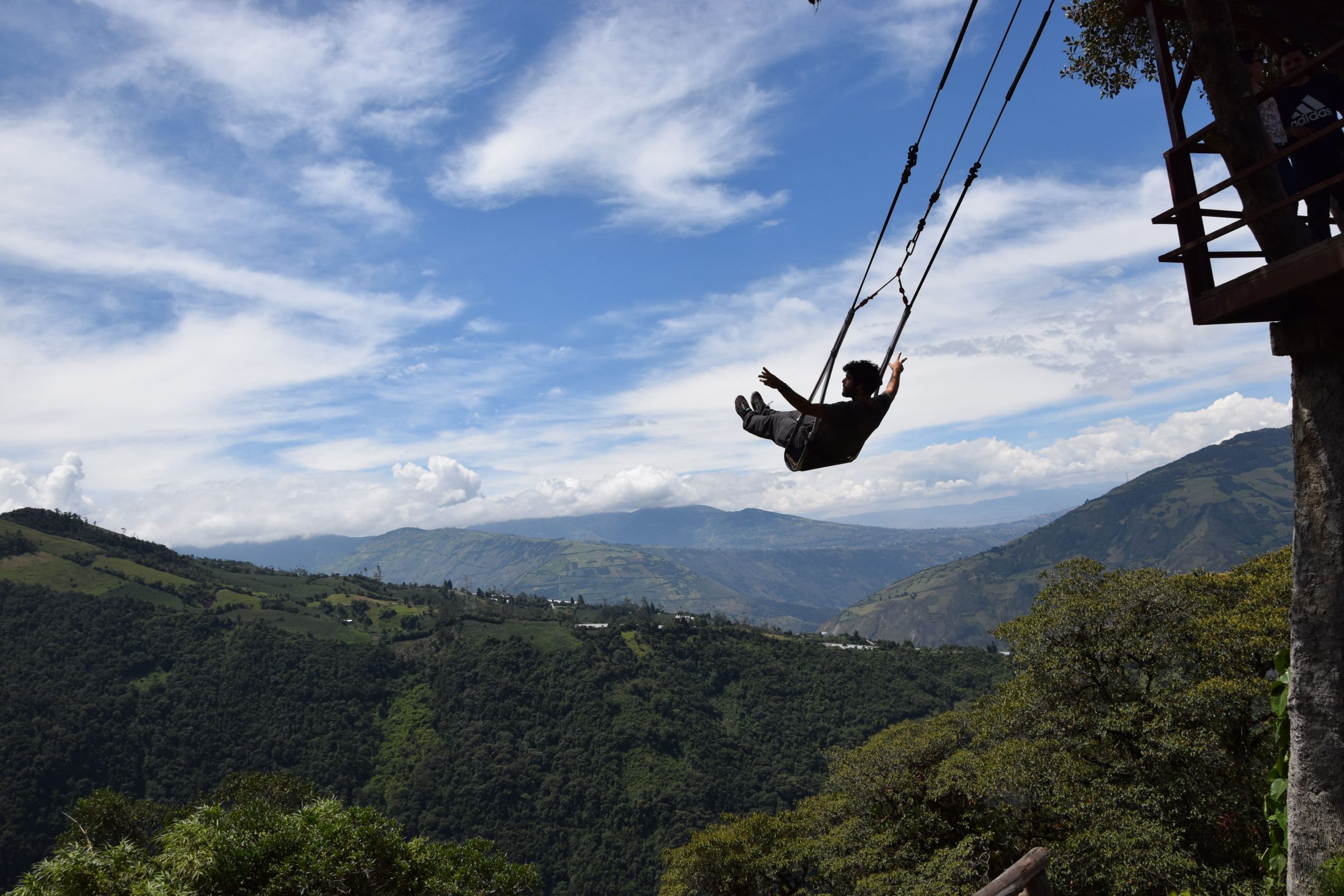Ecuador is quickly becoming a top destination in South America. One of the reasons for this is because of its geographic diversity and relatively small size. Over a relatively short vacation, you can experience and see much of the country. One of the most popular activities for visitors is hiking, and in the following blog, we’ll review some of the best hikes in Ecuador.
Note: Though you can embark on all of these hikes on your own, some are best done with a local guide. We’ll link to Wikiloc pages where possible if you’re the adventurous type.

Inca trail – el Camino del Inca
Though Perú had a stronger Incan presence, there are areas across Ecuador where you can experience the Incan civilization’s heritage. One of these is along the Inca trail, or Camino del Inca, located outside of Cuenca, which is one of the best hikes in Ecuador.
Note: This is not the same Incan trail found in Perú, but it follows the same royal road that connected Cuzco, Peru, with the northern empire of Quito.
This 4-day hike begins outside of Cuenca and traverses about 25 kilometers in total. On it, you will literally be following the Inca Trail and, in many sections, you’ll find that the path is well preserved.
The highest point during the trek reaches 4,300 meters and, along the way, you’ll pass through Andean farmlands, Incan heritage sites like Ingapirca, lakes, as well as the Paredones ruins.
This trek tends to be quite muddy, almost year round. Make sure to take rubber boots with you, and several pairs of dry socks. Since most of the hike is done at altitude, it helps significantly if you’re already acclimatized. That, in combination with the rough terrain, makes this a moderately difficult trail and, again, also best done with a guide.
Cotopaxi volcano
If you’re stopping through Quito at some point during your trip, you really can’t miss a visit to Cotopaxi, easily one of the best hikes in Ecuador, regardless of whether you just explore the park’s highlights or summit to this active volcano’s peak.
Cotopaxi’s conical, snow-capped peak makes it stand out along the Ecuadorian Andes. On a clear day, this is an incredible sight to behold, especially since the volcano is very much active; plumes of smoke and ash can be observed from a distance on most days.
One reason Cotopaxi makes for a great destination while you’re in Ecuador is because it’s located so close to Quito. From Quito, you simply head south on the Pan-American Highway for about an hour and a half to the entrance of Cotopaxi National Park. Between Quito and Cotopaxi, the elevation will rise from 2,600 meters to about 4,500 meters asl.
A few hikes you can do in Cotopaxi include:
Hike to the José Rivas Refuge
This is a short hike, but at a very high altitude. Keep this in mind if you aren’t acclimatized or are traveling with children. After going past the Cotopaxi National Park main entrance, you can either hitchhike or hire a truck to take you to the parking lot at the base of the volcano. From here, you hike up about 300 meters to the refuge.
Hike to Cotopaxi summit
If you have your eyes set on the Cotopaxi summit, that’s definitely possible too. It’s advisable to first climb a few of the nearby peaks that are lower and usually easier to complete. Some of these include Rucu Pichincha, Fuya Fuya and Rumiñahui (also accessible through Cotopaxi National Park).
To summit Cotopaxi, you’ll probably need a guide and can find these through the park or mountaineering companies in Quito and online. You’ll start around midnight and summit around sunset, after 6-7 hours of climbing. If you’re lucky, on a clear day you’ll witness one of the most beautiful Andean panoramas you might ever see.
Cotopaxi Loop / Vuelta al Cotopaxi
Though not officially a hiking path, you can follow the route used for the annual Vuelta al Cotopaxi, a two-day mountain biking race. It takes about 3-4 days to complete on foot, but keep in mind you’ll need all your gear, including a camping stove to prepare meals.

Quilotoa Loop
The Quilotoa Loop is one of Ecuador’s best hikes, especially for travelers without all the necessary equipment to camp and cook out in remote locations.
This is a multi-day (2-5 day) trek through the area surrounding the Quilotoa crater. As part of the trek, you can include a section into and / or around the crater itself.
You can go about the trek in a number of ways, but the most popular is starting from Quilotoa and ending in Sigchos.
Generally speaking, there’s an easier route and a harder route. The easier route takes you downhill from Latacunga, to Quilotoa, to Chugchilán, Isinliví, Sigchos and back to Latacunga. The harder route increases in elevation and starts in Latacunga, goes to Sigchos, Isinliví, Chugchilán, Quilotoa, Zumbahua and Latacunga.
Though you can try to do this hike (or a portion of it) in just 2 days, I would recommend dedicating about 4 days to exploring the area.

Chimborazo volcano
Chimborazo is technically higher than Mount Everest, if you consider that the Earth swells at the equator and that Chimborazo is the tallest mountain along the equator. It reaches 5,263 meters (20,548 feet)!
Though you can consider summiting this volcano, you don’t necessarily have to; there are some beautiful hikes in the area you should check out.
For instance, there’s a route that follows the Abraspungo valley where you can observe Chimborazo as well as Carihuairazo. In this area, you’ll also get to see llamas and vicuñas, as well as locals that use this land for grazing their animals.
During a 4-5 day trek, and if you are in good enough shape (as well as acclimatized) you might consider submitting summiting Chimborazo, but please note that you should coordinate beforehand to climb with a local guide.

Casa del Árbol
Though not really comparable to the previously described hikes (at all!), Casa del Árbol is a worthwhile destination if you’re passing through the city of Baños. To get to the Casa del Árbol, you can either hike from Baños directly or take a bus or taxi.
The hike will take about 5 – 6 hours and is mainly uphill. It may be difficult to those that aren’t used to hiking, but generally speaking, it’s an easy hike. There’s a trail that leads from Baños to the Mirador Virgen and then to Runtún.
Once at the Casa del Árbol, you can climb onto the original “Swing at the end of the world”, hanging from a treehouse that was built 14 years ago by Carlos Sánchez, an army veteran. Don’t worry, it’s been maintained since it was first built!
Let us know if you have any questions about the aforementioned hikes, we would be happy to provide more tips.
Happy wandering!



